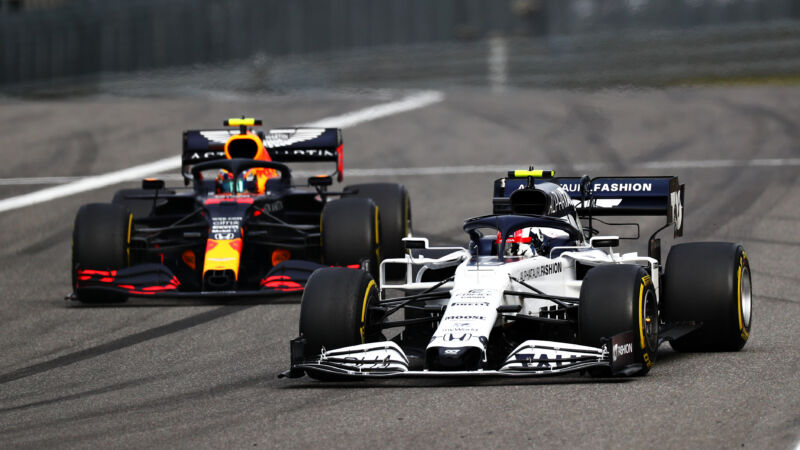Red Bull could quit F1 if new engine rules don’t happen

Enlarge / Pierre Gasly driving the Alpha Tauri Honda AT01 leads Alexander Albon in his Red Bull Racing RB16 during the F1 Eifel Grand Prix at Nurburgring on October 11, 2020 in Nurburg, Germany. The energy drink company Red Bull may quit the sport with both teams if it cannot find a solution to its engine supply problem. (credit: Dan Istitene - Formula 1/Formula 1 via Getty Images)
At the beginning of October, Honda shocked the world of Formula 1 by announcing its decision to quit the sport at the end of 2021. Currently, it supplies a pair of teams-Red Bull Racing and Alpha Tauri-both owned by the Red Bull energy drinks company. Red Bull now has to find a replacement supplier for the fiendishly expensive, insanely complicated hybrid powertrains required by the rules. And it, too, might quit the sport in 2022 if it can't do that to its satisfaction, a warning issued this week by Red Bull's sporting director, Helmut Marko. So what the heck is going on?
F1's hybrid eraThe first F1 cars to add an electric motor to their internal combustion engine powertrains took to the track in 2009. These were 80hp (60kW) motor-generator units (MGUs) that could recover kinetic energy from the rear wheels under braking and return it to those same wheels for short bursts of additional power during a lap. However, only four teams adopted this idea-called KERS, for kinetic energy recovery system-during the year, and it was abandoned by mutual consent at the end of that season.
In 2014, the sport adopted its current technical ruleset. The old naturally aspirated 2.4L V8 engines were replaced by new 1.6L turbocharged V6s, now with two mandatory hybrid elements to the power train. In place of KERS, there was an MGU-K (for kinetic), and a new MGU-H (for heat), which captured or deployed energy to the engine's turbocharger. The new powertrains are hugely powerful, reaching around 1,000hp (746kW) in qualifying trim last year. And they use less fuel than ever: since this article was written in 2016, the V6es have actually now exceeded 50-percent thermal efficiency.
Read 16 remaining paragraphs | Comments